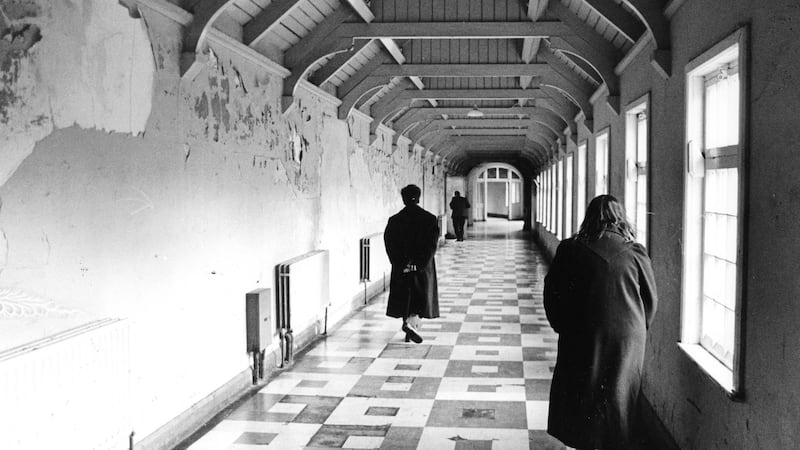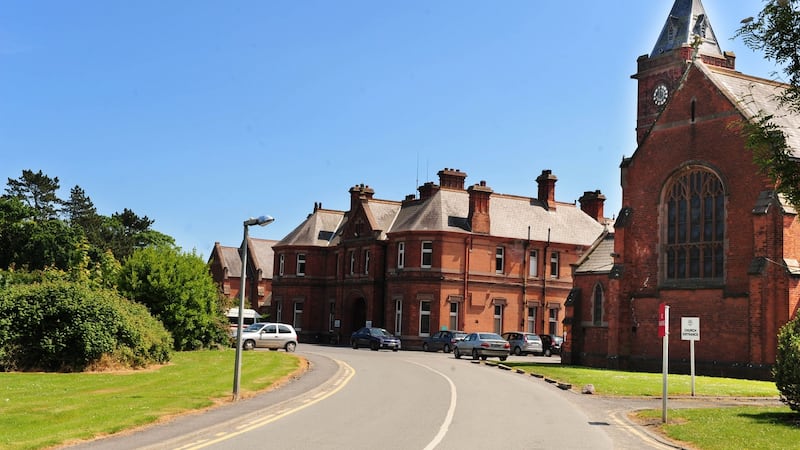Earlier this year, we learned that the cost of the National Paediatric Hospital, originally estimated at €650 million, has increased to at least €1.7 billion. The final cost will likely exceed €2 billion. The only thing surprising about this story is that anyone is surprised. We have been here before.
In the late 19th century, Ireland’s mental hospitals were full beyond capacity. The public asylum population ballooned from about 2,000 in 1843 to almost 16,000 in 1899, apparently confirming the stereotype of the “mad Irish”. The solution? More asylums. We combined poor healthcare with poverty, bad laws and a fatal weakness for institutions, and soon we had proportionately more people in mental hospitals than any other country in the world.
But Ireland never had an epidemic of mental illness; we had an epidemic of mental hospitals. The Irish asylums were vast in their heyday, and while staff were often kind to patients, they were kind in the unforgiving contexts of custodial institutions. Kindness is good, but freedom is better.
The Richmond District Asylum at Grangegorman in Dublin, with about 1,800 patients, was under particular pressure in the 1890s so it was decided in 1892 to build an overflow facility at Portrane in north Dublin. Building commenced with enthusiasm in 1896 but the project soon generated both unprecedented cost and unprecedented controversy. Heated debates surrounded the choice of location, awarding of contract, employment of staff, rising costs and general delays. Does any of this sound familiar?
On July 27th, 1896, in the House of Commons, Timothy Harrington, MP for Dublin Harbour, questioned the original tendering process for Portrane, but was rapidly reassured by Gerald Balfour, Chief Secretary for Ireland, that “tenders for building the new asylum at Portrane were invited by public advertisement, and at the meeting of the Board of Control held on the 21st instant, one of the tenders received was accepted”.
Progress was slow. In March 1897, James Laurence Carew, MP for Dublin College Green, asked Balfour “whether his attention has been called to the present alarming condition of the Richmond Lunatic Asylum in Dublin; whether he is aware that, with accommodation available for only 1,000 patients, 1,714 were housed there in October last; and that, in consequence of this overcrowding, beri-beri, a loathsome disease hitherto confined to the densely and filthy quarters of Chinese and other Eastern cities, has appeared [and] no practical steps have been taken?”


Balfour reassured the House that the Portrane asylum “is now in course of erection, and it is anticipated that the first portion of it will be ready for the reception of patients in about 12 months”.
Cost and governance were key issues. In July 1897, David Sheehy, MP for South Galway, asked if Balfour was aware “that a contract, involving nearly a quarter of a million sterling, on the new asylum at Portrane, was given away by the Board of Control, which is an unrepresentative body, without consultation with the Board of Governors?” Balfour denied the allegation but ruefully admitted that £12,000 had already been spent on temporary buildings owing to delays with Portrane.
In August 1897, John Dillon MP launched an out-and-out offensive, asking if Balfour was “aware that the contract for the Portrane Lunatic Asylum was given to a firm whose tender was £1,500 higher than the lowest tender” and that workers were being under-paid. Balfour denied any irregularity but could not deny problems with medical staffing and the overall delay. There was “legal difficulty in the way of appointing a resident medical superintendent for the new asylum at Portrane” and the project was further delayed, he said: “It is not anticipated that provision for the accommodation of as many as 700 patients can be completed by June next”.
Reassuringly for us today, the controversial asylum was finally completed, although the first female patients were not admitted until December 1901 and the asylum was not fully occupied until 1904, eight years after building commenced. Much less reassuringly, not only did the project cost vastly more than originally estimated, but no one has ever been able to figure out precisely how much it cost in the end.
Even in 1902, George Wyndham, the new chief secretary for Ireland, was careful to distance himself from estimates of cost and chose his words with impeccable care in the House of Commons: “I am informed that the expenditure already incurred on this auxiliary asylum amounts to £317,280 and that the Asylum Board propose to expend a further sum of £45,350 upon it”. Historian Joseph Reynolds estimates a capital cost of £335,000 while others estimate a much higher total, about £500,000.
Regardless of the precise cost, Portrane was the most expensive building contract awarded in Ireland at the time, just as the National Paediatric Hospital is today. On the plus side, the Portrane asylum eventually opened and functioned for over a century. On the negative side, the old asylum buildings are now mostly empty and abandoned, and the final cost of the project was never known – and might well be unknowable.
Brendan Kelly is professor of psychiatry in Trinity College Dublin and author of Hearing Voices: The History of Psychiatry in Ireland, just published in paperback (Irish Academic Press, €24.95)



















